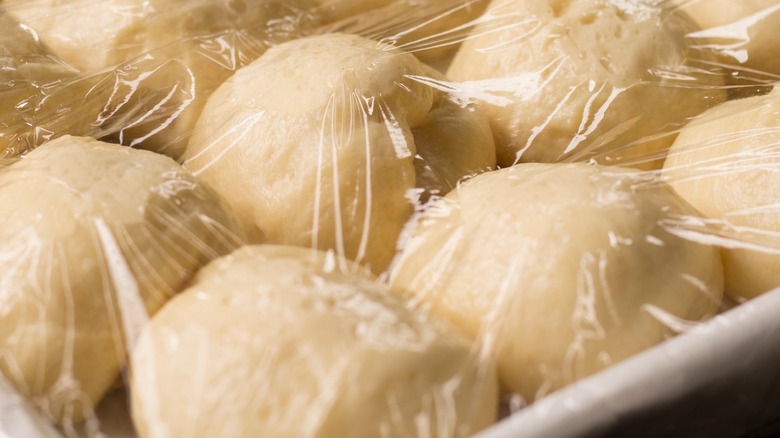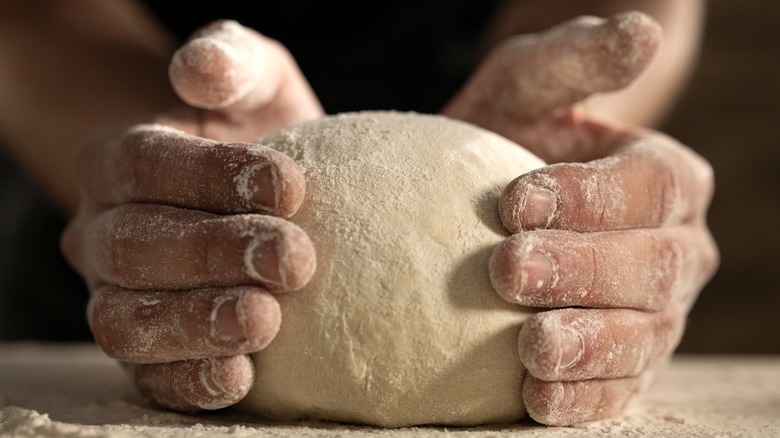Bread Improver Is The (Not So) Secret Ingredient For Better Bakes
Baking is both an art and a science, and it can take years to master the intricacies involved in making masterful creations of this sort, especially if there's yeast involved. However, don't be intimidated by any and all recipes that call for yeast. Instead, use a secret weapon.
There are a number of clever ingredients that will elevate your baking game — from vanilla bean paste to brown butter — but one stands out from the rest. Bread improver is a mixture of flour, enzymes, and emulsifiers that conditions your dough and improves the overall quality of the product.
Baking with yeast comes with a whole host of pitfalls. If you use expired yeast, you can pretty much guarantee a bad outcome. If you don't get the temperature of your water just right, you might kill the yeast altogether. Bread improver won't eliminate human error, but it will boost the rise and elevate your baked goods to a new level. Give it a try if your baked goods have been lacking that extra oomph you're seeking.
Bread improver boosts lackluster loaves
If you find baking with yeast to be daunting, you're a prime candidate to try using bread improver. This flour-based mixture will do exactly what its name suggests — enhance your dough. It works by adding gas to the dough while the yeast gets activated by water and then by expelling the gas, causing the dough to rise.
The overall result of this hack for baking bread is a better rise for your baked goods, a deeper golden brown color, and better texture in the final product. It can also increase the shelf life of your items and produce softer bread. Many bread improver brands call for adding equal parts yeast and bread improver. For others, you'll use one or two teaspoons for every cup of flour.
For the most part, bread improvers are made for commercial bakeries that are generating a lot of the same product in a short period of time. However, that doesn't mean you shouldn't keep some on standby in your kitchen for your next loaf.

